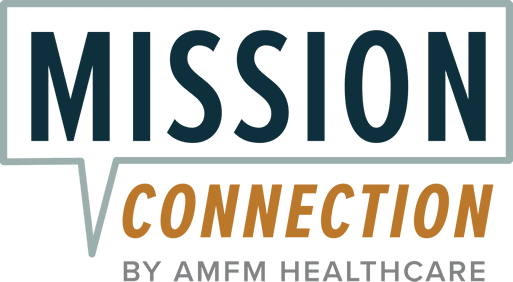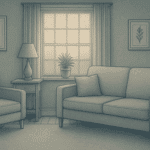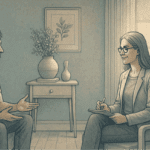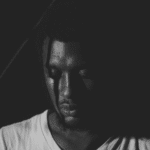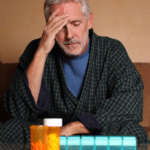What Is Depression? A Complete Guide

But just because depression is common, it doesn’t mean it’s not a serious mental health condition that needs support. Depression can affect your life in many ways, altering how you feel, think, and manage everyday tasks, such as eating, sleeping, and building relationships.
Fortunately, depression is treatable. Right now, it may feel like you’re drowning. But with professional guidance and support, alongside a structured treatment plan, you can begin to break through the surface.
On this page, we’ll give you the 4-1-1 on depression, including:
What depression is- Types of depression
- Signs and symptoms of depression
- Treatment for depression
- How to support someone with depression
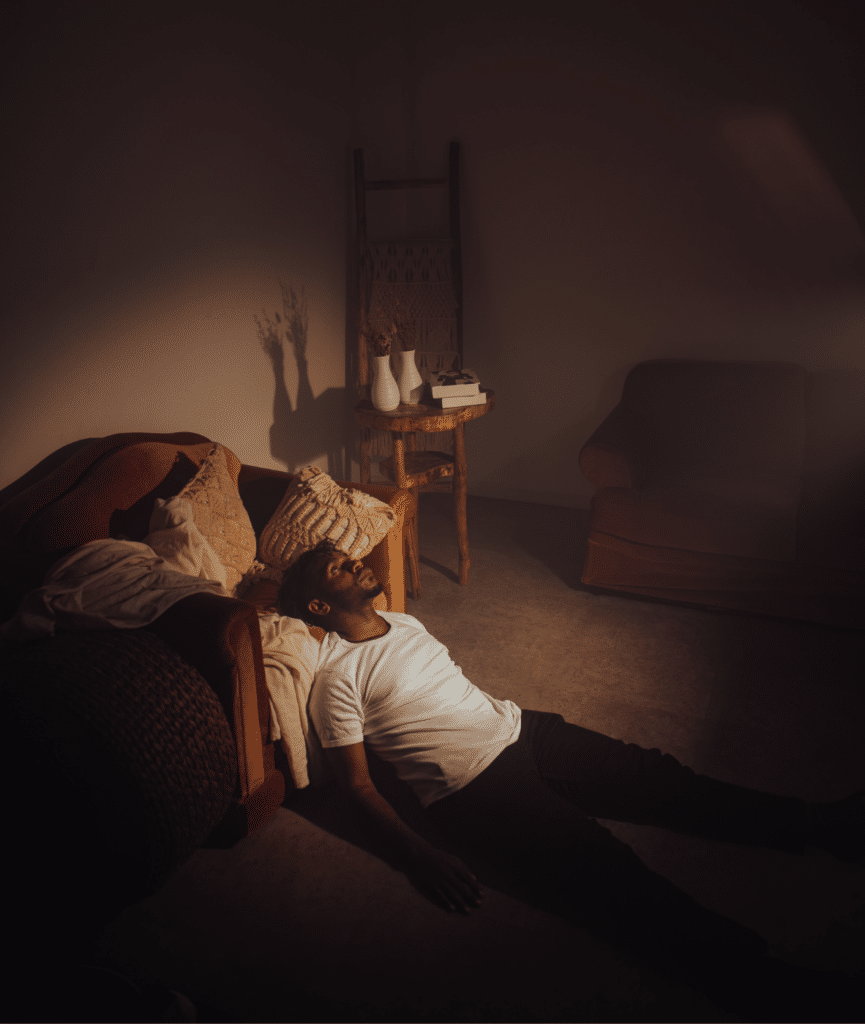
Key Takeaways
- Depression includes multiple types, each with distinct symptoms and severity.
- Common signs include persistent sadness, loss of interest, fatigue, sleep or appetite changes, and mood shifts.
- Causes may include genetic factors, chronic illness, hormonal changes, substance use, and life stressors.
- Effective treatment often combines evidence‑based therapy, medication, and self‑care strategies.
- Recognizing depression early and seeking help can significantly improve quality of life.
Table of Contents
What Is Depression?
Depression isn’t a simple case of feeling sad every now and then. Clinical depression (also known as major depressive disorder) is extreme sadness that’s present for months or even years. Clinical depression makes it difficult to do most things, including the tasks many of us take for granted, like brushing our teeth or going to work.
Depression can and does affect anyone, regardless of their gender, age, race, religion, or income. Let’s take a look at some of the stats on who experiences depression1:
3.8% of the global population (equivalent to 280 million)
- 5% of adults below 60 years
- 5.7% of adults older than 60
- 10% of pregnant and postpartum women
- 700,000 people die by suicide per year
This is just a snapshot of how common depression is. However, it gives us an idea of just how pervasive the problem is.
Types of Depression
Depression isn’t a one-size-fits-all condition. It is unique to every person who experiences it, and the events leading up to it are equally varied. What’s more, there is more than one type of depression. Depression has been broken down into the following types:
Major Depressive Disorder
Sadness or despair that lasts longer than 2 weeks and affects everyday life.
Persistent Depressive Disorder
Longer-lasting (around 2 years) but less severe depression symptoms. Also known as dysthymia.
Bipolar Disorder
A form of manic depression that involves depressive and manic episodes, which involve high activity levels and a more positive mood, but also increased irritability.
Seasonal Affective Disorder
This form of seasonal depression is often associated with winter. It typically develops in late fall or early winter and starts to clear up in spring and summer.
Depression With Psychosis Symptoms
Depression which also involves psychosis symptoms like hallucinations and delusions.
How Do You Know If You're Depressed?
Some people struggling with depression feel a deep sense of despair, while others report feeling nothing at all, described as an emotional numbness. Often, people with depression feel like they have no energy, and they find it difficult to concentrate or sleep. They may experience physical pain or frequently have difficult feelings, such as guilt, shame, or dread.
Below, we explore some of the most common physical and emotional depression symptoms.
Physical Signs of Depression
- Constipation
- Slower movements
- Low energy levels
- Feeling heavier than usual
- Physical pain without injury
- No or little interest in sexual activities
- Struggling to sleep, or sleeping more than usual
- Noticeable changes to your hunger levels or weight
Emotional Symptoms of Depression
- Feeling continuously sad or down
- Often wanting to cry
- Feeling full of guilt
- Struggling to make decisions
- Feeling worried or anxious a lot of the time
- Having negative thoughts and feelings about yourself
- Finding other people annoying or difficult to be around
- Having thoughts of harming yourself or dying by suicide
- Having no energy or motivation to do everyday activities
- Getting no enjoyment out of life, or things you used to love
- Frequent or constant feelings of helplessness, and like things are hopeless
It’s important to note that these are just some symptoms a person living with depression may experience. Each person’s experience is unique, and this is not a conclusive list.
Can a Person With Depression Have a Normal Life?
While it may not feel like it when you’re in the depths of depression, a normal life is possible. Depression is a treatable mental health condition. With the correct support and professional guidance, you can begin to heal and enjoy life again.
However, if depression is left untreated, the symptoms can worsen. As such, it’s vital to seek treatment for depression. After all, you deserve to feel better and enjoy life.
Treatment for Depression
The treatment for depression depends on the severity of a person’s symptoms. If you’re struggling with mild depression, you may still experience low mood, but this will likely not have a significant impact on your daily life. Many people with mild depression may associate their feelings with a bad day or feeling tired or “off”, rather than struggling with depression.
In these instances, experts advise you to wait and see if the symptoms persist longer than 2 weeks. Meanwhile, go to your GP to get guidance on how you can manage your symptoms, and ensure you’re exercising regularly.
However, for clinical depression, the course of treatment is different. It typically involves a combination of talking therapies and medication. We explore the therapy and medication options in more detail below.
Therapy for Depression
Therapeutic support can only help someone manage their depression symptoms so they no longer negatively influence their life. But more than this, if effective, it can prevent depression from affecting a person’s life in the future. Let’s explore the main therapy approaches for depression.
Cognitive Behavioral Therapy (CBT)
Studies evidence CBT as one of the most effective strategies for depression, especially when used in conjunction with medication. CBT focuses on changing the negative thoughts that those living with depression often experience. By doing so, it helps people change their behaviors and beliefs, which in turn positively impacts their work and personal lives.2
Behavioral Activation
Behavioral activation is a structured therapy that aims to increase a person’s fulfillment and sense of accomplishment in life by increasing their engagement in activities that bring them joy. This approach works particularly well for people who want to take a more independent approach to their treatment, as it can be used as a self-help strategy, as well as within therapy sessions.3
Psychodynamic Psychotherapy
Psychodynamic psychotherapy is a more traditional 1:1 form of therapy. It focuses on how past experiences, unconscious thoughts, and unresolved conflicts contribute to depression. By bringing these underlying issues to light and understanding how they’re feeding into their mental ill-health, a person can build emotional resilience and self-awareness. This approach appears particularly beneficial for people struggling with chronic depression, as it helps address the root cause of their difficulties.4
Interpersonal Therapy (IPT)
Interpersonal therapy is a time-limited form of talk therapy that typically consists of 16 sessions. The main aim of IPT is to help a person understand their feelings and recognize how these are affecting their relationships. Research shows that IPT is an effective form of treatment for depression, and some evidence suggests that it has more of an impact than CBT. However, more research is needed to confirm this.5
Depression Medication
If someone struggling with depression goes to a doctor, they’ll often be offered a combination of therapy and medication. Studies show that medication is an effective treatment for depression, particularly alongside therapy.
Antidepressants typically work by balancing specific neurotransmitters in the brain, such as dopamine, serotonin, and norepinephrine – all neurotransmitters that are thought to play a role in mood regulation.
Selective Serotonin Reuptake Inhibitors (SSRIs)
SSRIs are often prescribed due to their effectiveness and relatively mild side effects. They work by increasing the levels of serotonin available in the brain. Some of the most common SSRIs are Prozac, Zoloft, Paxil, escitalopram and citalopram.
Serotonin and Norepinephrine Reuptake Inhibitors (SNRIs)
SNRIs increase levels of both norepinephrine and serotonin. They are sometimes prescribed when SSRIs have not been effective. Common SNRIs are Effexor, duloxetine, and Pristiq.
Atypical Antidepressants
These gain their name by working slightly differently from SSRIs and SNRIs. For example, Bupropion primarily affects dopamine and norepinephrine. Mirtazapine and trazodone, on the other hand, can improve sleep.
It’s important to note that medication isn’t the best choice for everyone, and finding the right medication and dosage can take time. So, if depression medication is the route you go down, remember to work closely with your doctor or psychiatrist to ensure it’s working effectively.
How to Support Someone With Depression
Depression is a serious condition that affects a person’s life in more ways than we can count. If someone in your life is currently struggling with depression, we don’t need to tell you how difficult this can be on their relationships.
When supporting a loved one with depression, it can be difficult to know what to do. You may be worried that saying something will make it worse, or you might be feeling hurt by some of the things they have said or done. It’s important to remember that depression can make it difficult to be vulnerable with those around you, and the person with depression may often feel like a burden. None of this is personal – these are indicators that someone is struggling.
Here are some ways you can start the conversation if you’re worried someone you know may be struggling with depression:
- “Just checking in on you, as I noticed you’ve been seeming down recently.”
- “I’ve been worried about you. What’s up?”
- “I noticed you haven’t been going out as much, and I wondered how you are doing.”
And here are phrases you can use that may help a person living with depression feel supported:
- “I’m here for you. Whatever you need.”
- “It may feel impossible right now, but it won’t always feel like this.”
- “Please tell me how I can support you.”
- “You mean a lot to me. I love having you in my life.”
When speaking to someone living with depression, ensure you don’t dismiss or minimize their experience. For example, by saying, “I felt sad the other day too” or “Come on, you just need to get outside.”

Seek Immediate Treatment for Depression
If you or someone you know has depression and you’re not sure what to do next, know that you’re not alone. There are many treatments available, and it often helps to talk through your options with a mental health professional.
At Mission Connection, we pride ourselves on our flexible, accessible care. Our team of highly trained mental health professionals offers personalized support, ensuring your treatment for depression is specific to you and your needs.
We offer a range of treatment options, including:
- Residential mental health treatment
- Short-term inpatient mental health treatment
- Intensive outpatient treatment
- Partial hospitalization
- Outpatient mental health services, including in-person and online therapy
If you want to discuss treatment options for you or someone you love, don’t hesitate to reach out to us at 866-708-5985.
Alternatively, fill this out to get started.
References
- World Health Organization. (2023, March 31). Depressive disorder (depression). https://www.who.int/news-room/fact-sheets/detail/depression#:~:text=An%20estimated%203.8%25%20of%20the,%E2%80%9329%2Dyear%2Dolds.
- Gautam, M., Tripathi, A., Deshmukh, D., & Gaur, M. (2020). Cognitive Behavioral Therapy for Depression. Indian journal of psychiatry, 62(Suppl 2), S223–S229. https://doi.org/10.4103/psychiatry.IndianJPsychiatry_772_19
- Chartier, I. S., & Provencher, M. D. (2012). Behavioural activation for depression: Efficacy, effectiveness and dissemination. Journal of Affective Disorders, 145(3), 292–299. https://doi.org/10.1016/j.jad.2012.07.023
- Luyten, P., & Blatt, S. J. (2012). Psychodynamic treatment of depression. The Psychiatric clinics of North America, 35(1), 111–129. https://doi.org/10.1016/j.psc.2012.01.001
- De Mello, M. F., De Jesus Mari, J., Bacaltchuk, J., Verdeli, H., & Neugebauer, R. (2004). A systematic review of research findings on the efficacy of interpersonal therapy for depressive disorders. European Archives of Psychiatry and Clinical Neuroscience, 255(2), 75–82. https://doi.org/10.1007/s00406-004-0542-x
Depression FAQs
Depression is more than feeling sad — it’s a mental health condition that affects how you think, feel, and function day to day. If you’ve been experiencing ongoing low mood, fatigue, trouble concentrating, or a loss of interest in things you used to enjoy, it might be time to speak with a professional.
We help individuals with various forms of depression, including major depressive disorder, persistent depressive disorder (dysthymia), postpartum depression, seasonal depression, and depression that occurs alongside other mental health or medical conditions.
Depression can stem from many factors — such as genetics, long-term stress, chronic illness, major life changes, substance use, or imbalances in brain chemistry. Often, it’s a combination of influences unique to each person.
We offer personalized care plans that may include talk therapy, such as cognitive behavioral therapy (CBT) or dialectical behavior therapy (DBT), medication management, and support for overall wellness. Our goal is to help you find the right approach that fits your needs and lifestyle.
If you’re feeling overwhelmed, stuck, or not like yourself, reaching out is a strong and important first step. At Mission Connection, we offer supportive, judgment-free care to help you understand what you’re going through and begin healing.
- Signs of Treatment-Resistant Depression
- Signs of Depression Relapse
- Depression-Related Sleep Issues
- Depression Symptom Checklist
- ICD-10 Criteria for Depression
- Major Depressive Disorder (MDD) Symptoms
- Depression Symptoms
- Depression Self-Test
- PHQ-9 Depression Test
- Warning Signs of Depression
- Types of Depression
- Best Therapies for Depression
- Talk Therapy for Depression
- Telehealth for Depression
- Personalized Therapy for Depression
- Holistic Treatment for Depression
- Online Therapy for Depression
- Effective Treatments for Depression
- Medications for Depression
- Treatment-Resistant Depression Options
- Depression Relapse Prevention
